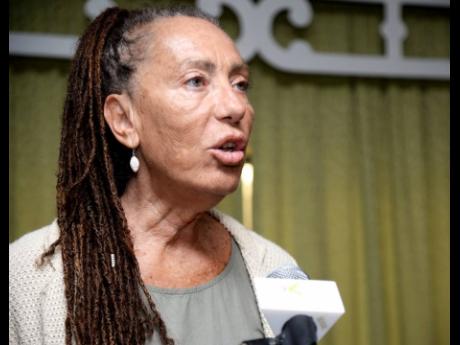New prison must be priority
Human rights group urges prime minister to reconsider construction delay; put strong focus on rehabilitation
A local human rights group is urging Prime Minister Andrew Holness to reconsider his decision to put on hold the construction of a maximum security prison, and instead make it a top priority.
The prime minister, in the wake of the August 11 mass killing at Cherry Tree Lane in Clarendon, which left eight persons dead, revived the issue about the need for the construction of a new prison following disclosure that incarcerated persons were involved in the organisation of the deadly attack.
However, Holness said while there were several discussions on the possibility of constructing a new facility with draft plans on the table, the initiative has been sidelined due to budgetary constraints.
“Building a new prison would certainly draw quite a bit of political attention as to whether or not that is wise use of funds when we need new hospitals, new schools, roads and all the other issues. So we have to be very careful as a government how we make these kinds of fiscal allocations,” Holness said at a press conference days after the mass shooting that also left at least nine persons injured.
A PLACE OF REHABILITATION
Yesterday, Executive Director of Stand Up for Jamaica (SUFJ), Carla Gullotta, insisting that a new prison is urgently needed, criticised the approach to continuously place the issue on the back burner.
“Every time we mention the fact that a new prison is needed, other items are raised as relevant for the Jamaican society. But I think this is a blind corner because it is going to produce more violence, it is going to produce more recidivism due to the fact that those who are willing to make changes and go back to society with a diploma, with the possibility to get a job and to go back to their community as better people, cannot do it because there are no instruments for them to do so,” she asserted.
Gullotta further highlighted that the rehabilitation of prisoners must be a key focus in the construction of any new facility.
“People are planning for a maximum security prison that can be an option, but the main thing that we should consider is that a new prison should be built on standards which allow access to rehabilitation for all, otherwise it is a missing goal,” she said.
“A new prison is needed but it should not be a prison that is considered a fortress where you lock them away without access to any programme. It should be a place where all the principles and objectives of rehabilitation are fully supported by the Government, its agencies and ministries as well as civil society and private sector.”
The human rights activist noted that the country’s two main prisons, Tower Street Adult Correctional Centre and St Catherine Adult Correctional Centre which were originally built as forts, are currently not conducive for rehabilitation given the severe infrastructural issues as well as overcrowding.
“Tower Street can hold around 800 inmates but they have over 1,700 and more. St Catherine should only be housing 700 inmates but it is housing more than a 1,000. The infrastructure is very poor and is not enough to accommodate all the prisoners,” she said.
UNITED APPROACH
Further, Gullotta pointed out that since the earthquake last October, the situation has worsened in that some of the blocks at the prisons have been declared unfit for prisoners.
Added to that, she shared that the inmates living arrangements were highly unacceptable and posed a health risk.
“So inmates are five in a cell which is planned for two. Two on a sponge, two on a hammock and one hold the grille in the night and they have shifts. They are locked in between 3:00 p.m. and 9:30 in the morning,” she said.
“There is no access to bathrooms, latrines, anything, so the inmates have to have their own little bucket in the cell where they urinate and defecate in front of everybody. It is really a health hazard and a humiliation.”
Along with those challenges, she said there is also inadequate space for prisoners who want to learn a skill or pursue their education.
“When we at SUFJ and the Department of Correctional Services (DCS) propose to inmates to go to school, everybody wants to go but we cannot take them in because the space is not enough,” Gullotta shared.
According to her, while the DCS has made efforts to make improvements, it has a small budget that reflects the philosophy of the country which is still proposing to “lock dem up and throw away the key”.
This, the SUFJ head said, is “without the understanding that there are more than 3,500 people who have done something wrong and are going back to society and might risk doing something wrong again because nobody is giving them a chance”.
Gullotta emphasised that a united approach is needed in the promotion of second chances for inmates as part of the fight against crime and violence plaguing the society.
Also, she said greater use could be made of the low-risk facilities by using the prisoners there to produce goods to feed the institutions’ population, expand entrepreneurship initiatives and generate income which could be invested in projects and welfare.
In the meantime, the human rights advocate is reminding the Government and the private sector that rehabilitation is ineffective without reintegration. Consequently she is urging the Government to rethink its policy of not employing persons who have been convicted and imprisoned.
“If they achieve six subjects, a HEART/NSTA diploma, and a professional skill, they undoubtedly need support in finding jobs, unless we want to send them back to prison,” she said.


